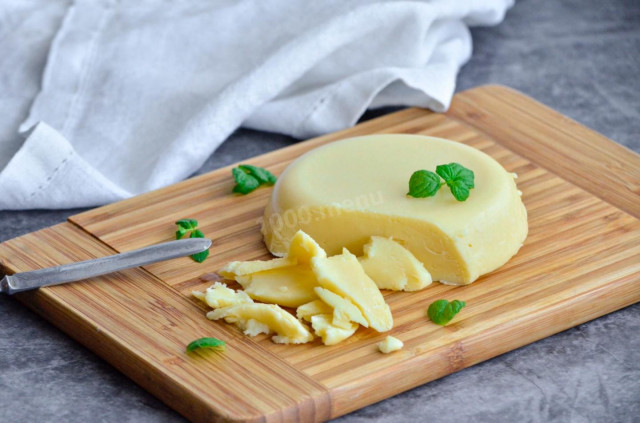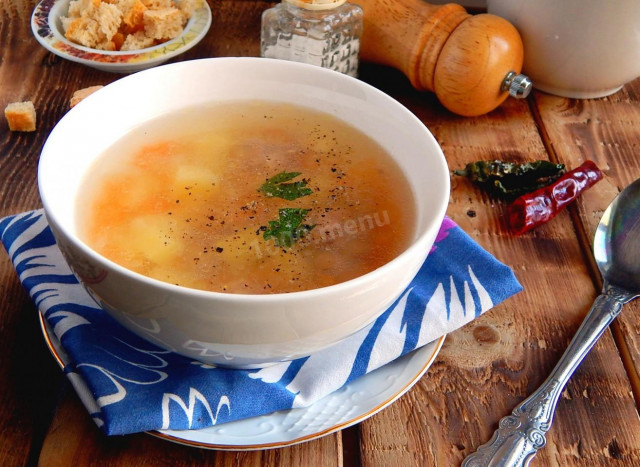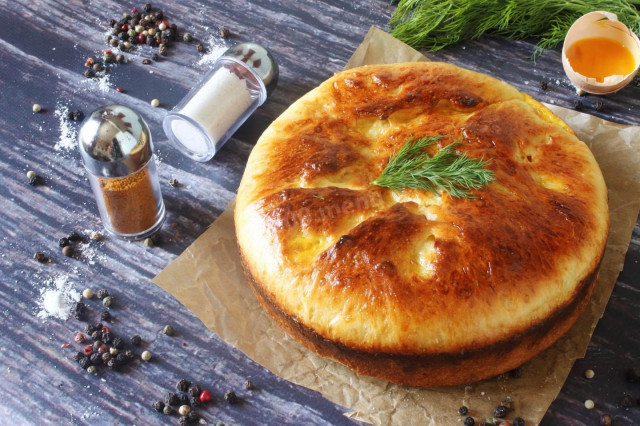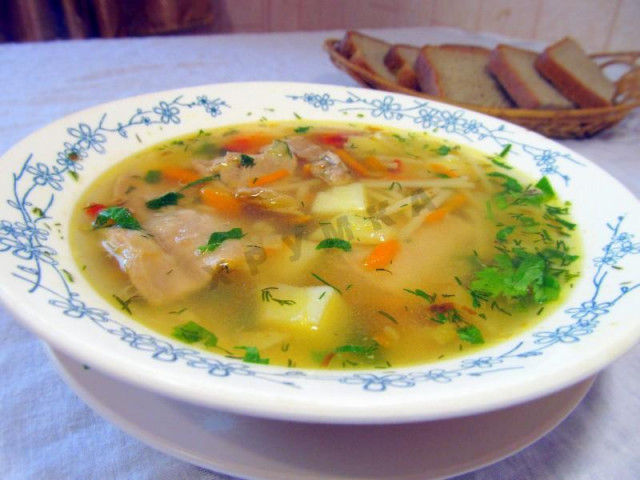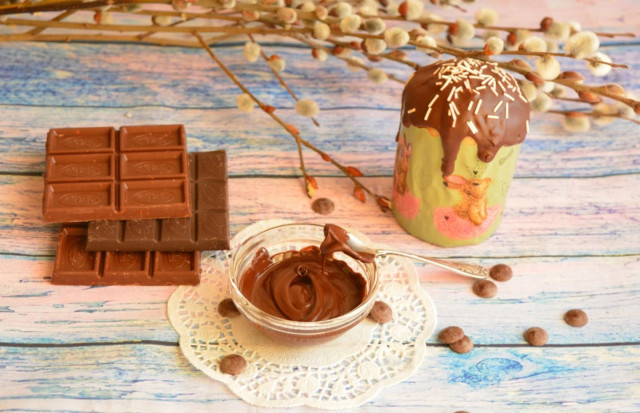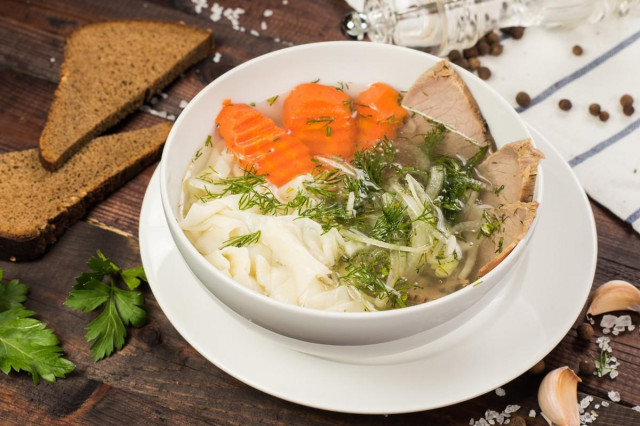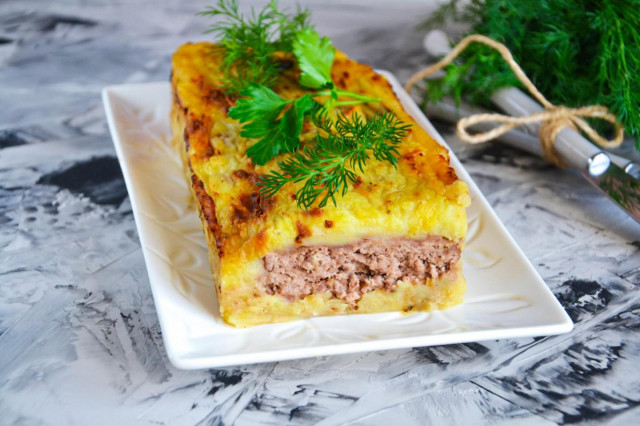Composition / ingredients
Step-by-step cooking
Step 1:
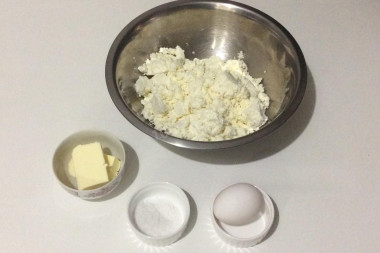
How to make homemade cheese without milk? Prepare the products. Cottage cheese is better to take a fat rustic, from the store cheese may not work. Butter is of high quality, without additives, corresponding to GOST.
Step 2:

In a separate bowl, mix the cottage cheese, egg, salt and soda. I kneaded right with my hand to knead all the lumps in the cottage cheese. You can punch the mass with an immersion blender.
Step 3:
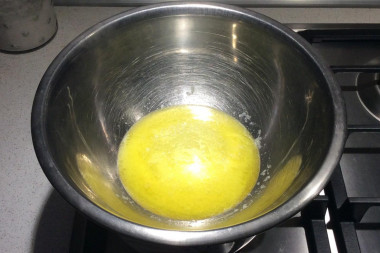
Build a water bath on the stove. Take a large saucepan, pour water into it up to half the volume and put it on fire. After boiling the water, place a bowl of such size on top so that the edges hold onto the sides of the pan. Turn down the fire. The water bath is ready. Put the butter in a bowl and melt it.
Step 4:
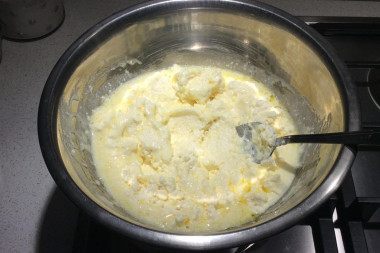
Add the curd mass to the butter, mix.
Step 5:
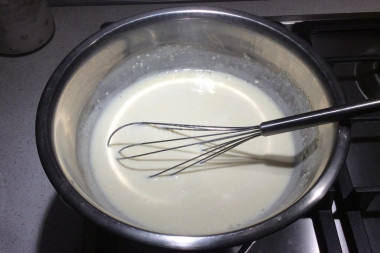
With constant stirring, cook the mass until the cottage cheese is completely melted. It should become homogeneous and liquid. I stirred with a whisk.
Step 6:
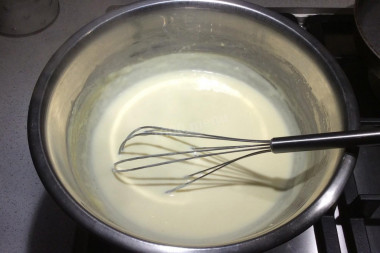
After this happens, continue to cook the cheese further. It cooks for quite a long time, at least 30 minutes, from time to time the mass should be stirred.
Step 7:
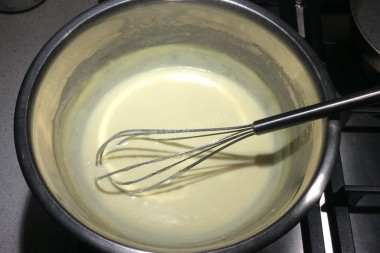
If you cook the cheese for 30 minutes, it will come out soft, very similar to the processed cheese Friendship. To get hard cheese, cook for 45-50 minutes. The mass will boil well and thicken, as can be seen from the photo. Keep an eye on the water level in the pan, if it boils, add more.
Step 8:
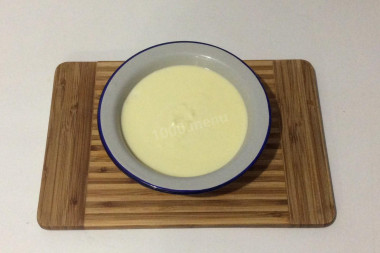
Pour the cheese into the mold in which it will be stored and leave to cool at room temperature. Enameled, glass or plastic containers and bowls are suitable as a form. Then cover the mold with a lid and send it to the refrigerator. The cheese will be ready in two hours.
Step 9:

I left the cheese overnight, in the morning I easily took it out of the bowl. Properly cooked cheese is easy to cut and does not stick to the knife. It is very tasty to eat it just like that, with fresh bread and butter. Enjoy your meal!
I do not advise taking a large amount of cottage cheese at once. 500 grams is optimal for a start. From this amount, you will have about 250 grams of the finished product.
It is not necessary to follow the melting all the time, I was just there, stirring the mass with a whisk from time to time. The main thing is to make sure that the water in the pan does not boil away.
It so happened that the first time I cooked cheese for half an hour. And the next day I had not a solid, but a melted product. I sent him to the water bath again, and cooked him for about half an hour. The cheese has already come out almost solid, it didn't work to cut it into thin slices, but I ate the sandwich)
Conclusion: to get hard cheese, you need to cook for about an hour, even more. Or use a drier cottage cheese.
Do not forget that products cooked at home have a shorter shelf life. Store the finished cheese in a bowl with a lid in the refrigerator.
Be sure to wash the eggs before use, as even the seemingly clean shell may contain harmful bacteria. It is best to use food detergents and a brush.
Is it possible to replace baking powder with soda, how to add them correctly so that the baking is lush, how to avoid an unpleasant soda taste and much more, read the article "Baking powder or baking soda - which is better?"
How do I know if an egg is fresh? Break it into a separate container. First of all, there should be no unpleasant smell. The protein of fresh eggs will be transparent and clean. The yolk should not spread and will be shiny, convex, homogeneous.
Caloric content of the products possible in the composition of the dish
- Chicken egg - 157 kcal/100g
- Egg white - 45 kcal/100g
- Egg powder - 542 kcal/100g
- Egg yolk - 352 kcal/100g
- Ostrich egg - 118 kcal/100g
- Cottage cheese of 40% fat content - 466 kcal/100g
- Cottage cheese of 20% fat content - 233 kcal/100g
- Cottage cheese of 18% fat content - 226 kcal/100g
- Cottage cheese of 10% fat content - 156 kcal/100g
- Low-fat cottage cheese - 75 kcal/100g
- Cottage cheese with sour cream - 260 kcal/100g
- Fruit cottage cheese - 147 kcal/100g
- Soft dietary cottage cheese - 170 kcal/100g
- Vitalinia cottage cheese - 64 kcal/100g
- Cottage cheese "morning" ( "danone") without sugar - 91 kcal/100g
- Cottage cheese - 156 kcal/100g
- Butter 82% - 734 kcal/100g
- Amateur unsalted butter - 709 kcal/100g
- Unsalted peasant butter - 661 kcal/100g
- Peasant salted butter - 652 kcal/100g
- Melted butter - 869 kcal/100g
- Salt - 0 kcal/100g
- Baking soda - 0 kcal/100g

